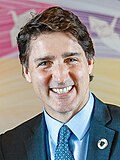
Back Kanadische Unterhauswahl 2025 German Elecciones federales de Canadá de 2025 Spanish چهل و پنجمین انتخابات فدرال کانادا Persian Élections fédérales canadiennes de 2025 French 45th Canadian federal election SIMPLE 2025年加拿大聯邦大選 Chinese
| |||||||||||||||||||||||||||||||||||||||||||||||||||||||||||||||||||||
343 seats in the House of Commons 172 seats needed for a majority | |||||||||||||||||||||||||||||||||||||||||||||||||||||||||||||||||||||
|---|---|---|---|---|---|---|---|---|---|---|---|---|---|---|---|---|---|---|---|---|---|---|---|---|---|---|---|---|---|---|---|---|---|---|---|---|---|---|---|---|---|---|---|---|---|---|---|---|---|---|---|---|---|---|---|---|---|---|---|---|---|---|---|---|---|---|---|---|---|
| Opinion polls | |||||||||||||||||||||||||||||||||||||||||||||||||||||||||||||||||||||
| |||||||||||||||||||||||||||||||||||||||||||||||||||||||||||||||||||||
 New electoral districts to be used for this election | |||||||||||||||||||||||||||||||||||||||||||||||||||||||||||||||||||||
| |||||||||||||||||||||||||||||||||||||||||||||||||||||||||||||||||||||
The 2025 Canadian federal election will take place on or before October 20, 2025, to elect members of the House of Commons to the 45th Canadian Parliament. The date of the vote is determined by the fixed-date provisions of the Canada Elections Act, which requires federal elections to be held on the third Monday in October in the fourth calendar year after the polling day of the previous election, though a current government bill proposes to postpone the date to October 27, 2025, to avoid conflicting with Diwali.[1] In addition to the statutory fixed election date provisions, Canada has a constitutional requirement specified in both section 50 of the Constitution Act, 1867 and section 4 of the Canadian Charter of Rights and Freedoms that elections for the House of Commons must be called no more than five years after the writs for the preceding election are returned.
The election may occur before the scheduled date, if the governor general dissolves Parliament on the recommendation of the prime minister for a snap election, or if the House of Commons passes a motion of no confidence in the government. Early elections are more likely to occur during minority governments because the prime minister does not control a majority in the House of Commons.[2][3][4]
This will be the first election to use a new 343-seat electoral map based on the 2021 Canadian census. New electoral boundaries for each of the ten provinces were finalized between February 14 and July 8, 2023,[5][6][7] and officially proclaimed on September 22, 2023.[8] The previous 338-seat electoral map would have been used if the election had been called before April 23, 2024.[9][8][10]
Cite error: There are <ref group=lower-alpha> tags or {{efn}} templates on this page, but the references will not show without a {{reflist|group=lower-alpha}} template or {{notelist}} template (see the help page).
- ^ Cite error: The named reference
Leblancwas invoked but never defined (see the help page). - ^ Aiello, Rachel (October 24, 2019). "Split opposition means stronger minority for Liberals, experts say". CTV News. Retrieved October 25, 2019.
- ^ Harris, Kathleen (October 21, 2020). "Snap election averted as Liberal government survives confidence vote in Commons". CBC News. Retrieved November 26, 2020.
- ^ Coyne, Andrew (October 28, 2020). "What, exactly, is a non-confidence vote? Parliament should get to decide". The Globe and Mail. Retrieved November 26, 2020.
- ^ Federal Electoral Boundaries Commission for Newfoundland and Labrador. "Redistribution process timeline in Newfoundland and Labrador".
- ^ Federal Electoral Boundaries Commission for Prince Edward Island. "Redistribution process timeline in PEI".
- ^ Federal Electoral Boundaries Commission for Ontario. "Redistribution process timeline in Ontario".
- ^ a b Elections Canada. "Implementation of New Federal Electoral Boundaries".
- ^ Federal Electoral Boundaries Commission. "Timeline for the Redistribution of Federal Electoral Districts".
- ^ Proclamation declaring the Representation Order to be in Force effective on the First dissolution of Parliament that Occurs after April 22, 2024, SI/2023-57 , reported in the Canada Gazette, Part II, Vol. 157, Extra, September 27, 2023





